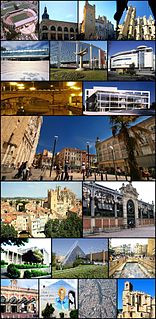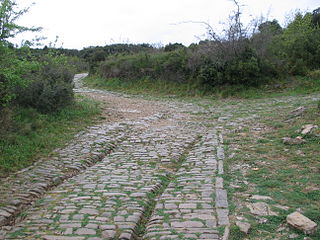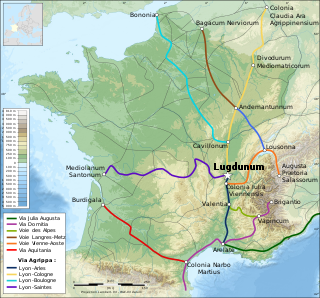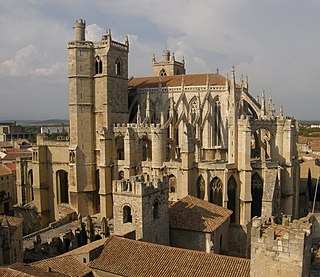| Narbo | |
|---|---|
| Former settlement | |
| Coordinates: 37°13′02″N119°42′05″W / 37.21722°N 119.70139°W Coordinates: 37°13′02″N119°42′05″W / 37.21722°N 119.70139°W | |
| Country | United States |
| State | California |
| County | Madera County |
| Elevation [1] | 1,995 ft (608 m) |
Narbo is a former settlement in Madera County, California. [1] It was located on Quartz Mountain about 4.25 miles (7 km) north of O'Neals, [2] at an elevation of 1995 feet (608 m). [1]

Madera County, officially the County of Madera, is a county at the geographic center of the U.S. state of California. As of the 2010 census, the population was 150,865. The county seat is Madera.

California is a state in the Pacific Region of the United States. With 39.6 million residents, California is the most populous U.S. state and the third-largest by area. The state capital is Sacramento. The Greater Los Angeles Area and the San Francisco Bay Area are the nation's second- and fifth-most populous urban regions, with 18.7 million and 9.7 million residents respectively. Los Angeles is California's most populous city, and the country's second-most populous, after New York City. California also has the nation's most populous county, Los Angeles County, and its largest county by area, San Bernardino County. The City and County of San Francisco is both the country's second-most densely populated major city after New York City and the fifth-most densely populated county, behind only four of the five New York City boroughs.

Quartz Mountain is located in Greer County in southwest Oklahoma. It is the namesake of Quartz Mountain Nature Park and its eastern flank is enclosed by the park boundaries. It is near the cities of Mangum, Oklahoma and Altus, Oklahoma. The park is open to the public year round for rock climbing, hiking, boating, camping, nature observation and photography, and environmental education and interpretation. The mountain overlooks scenic Lake Altus-Lugert.
Narbo was a mining community financed by French investors. [2] The name Narbo comes from Narbonne, the name of one of the investors. [2] Narbo is the Latin name for the town Narbonne, France. A post office operated at Narbo from 1884 to 1887. [2]

Latin is a classical language belonging to the Italic branch of the Indo-European languages. The Latin alphabet is derived from the Etruscan and Greek alphabets and ultimately from the Phoenician alphabet.

Narbonne is a commune in southern France in the Occitanie region. It lies 849 km (528 mi) from Paris in the Aude department, of which it is a sub-prefecture. It is located about 15 km (9.3 mi) from the shores of the Mediterranean Sea and was historically a prosperous port, but declined from the 14th century following a change in the course of the Aude River. It is marginally the largest commune in Aude, although the prefecture is the slightly smaller commune of Carcassonne.

France, officially the French Republic, is a country whose territory consists of metropolitan France in Western Europe and several overseas regions and territories. The metropolitan area of France extends from the Mediterranean Sea to the English Channel and the North Sea, and from the Rhine to the Atlantic Ocean. It is bordered by Belgium, Luxembourg and Germany to the northeast, Switzerland and Italy to the east, and Andorra and Spain to the south. The overseas territories include French Guiana in South America and several islands in the Atlantic, Pacific and Indian oceans. The country's 18 integral regions span a combined area of 643,801 square kilometres (248,573 sq mi) and a total population of 67.3 million. France, a sovereign state, is a unitary semi-presidential republic with its capital in Paris, the country's largest city and main cultural and commercial centre. Other major urban areas include Lyon, Marseille, Toulouse, Bordeaux, Lille and Nice.












